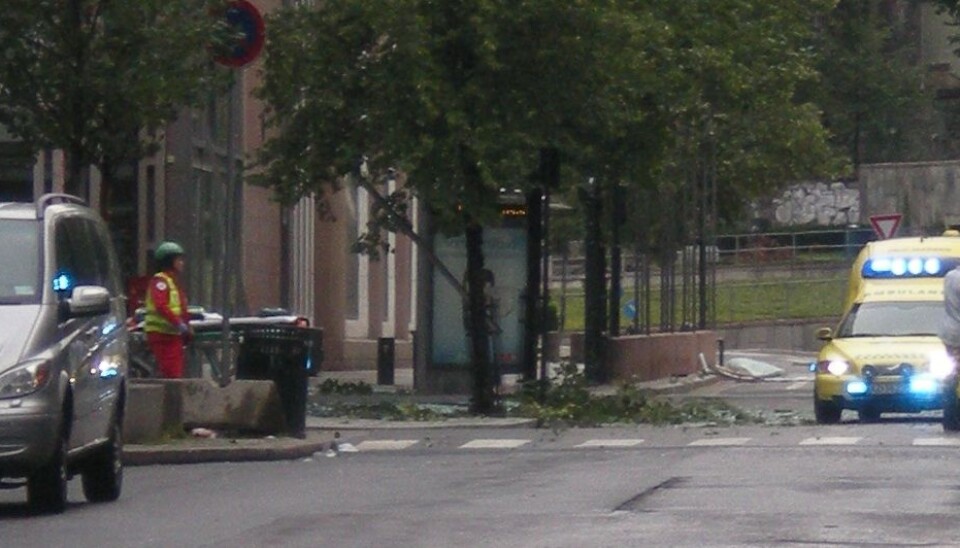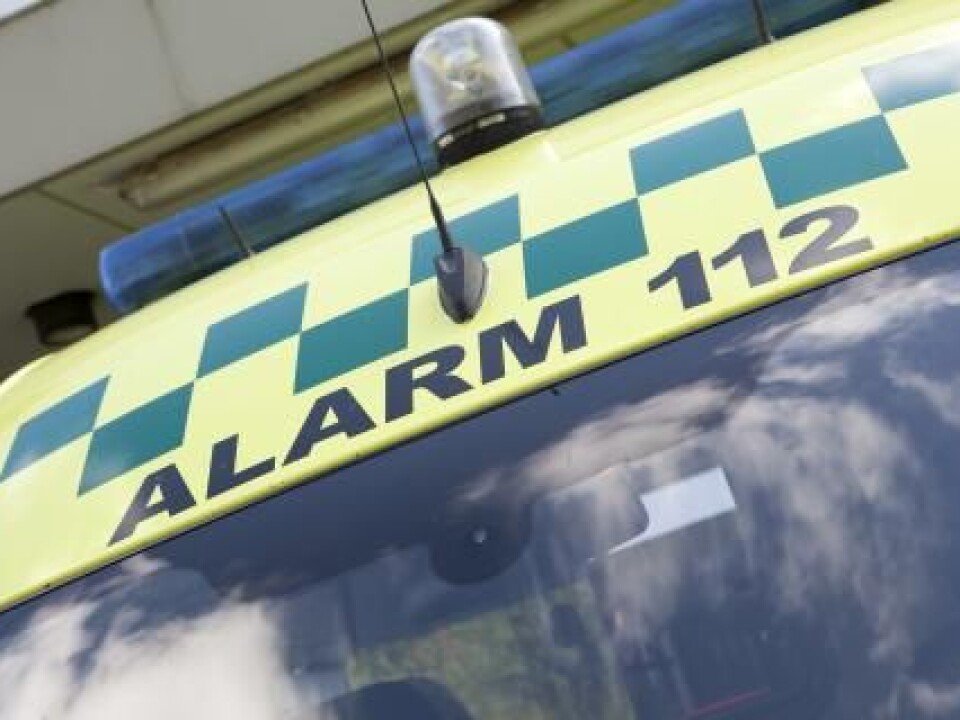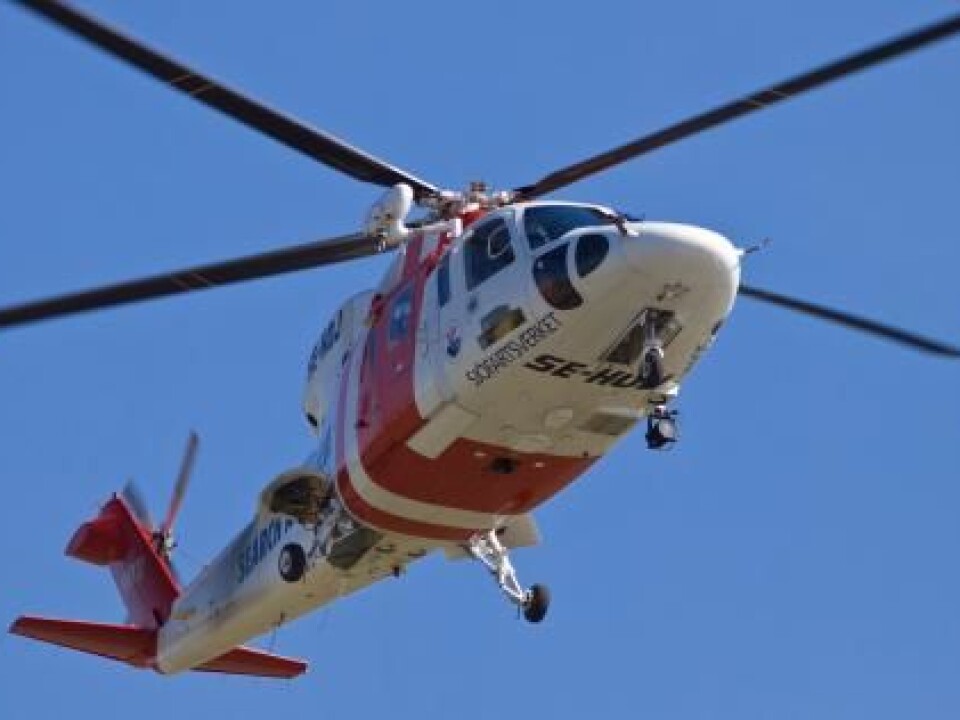
Oslo terrorism response: fine medical effort despite flaws
Emergency medical teams made significant efforts when they treated the victims of last year's terrorist attacks in Oslo. But there were flaws.
Denne artikkelen er over ti år gammel og kan inneholde utdatert informasjon.
“Norway lacks a joint system for triage when a major accident or crisis situation occurs,” points out air ambulance doctor and researcher Stephen Sollid.
Sollid is the first author of a new study that proposes the establishment of a national standard for triage - i.e. sorting, categorising and prioritising casualties for treatment - after massive accidents.
The report was published this week in the freely accessible Scandinavian Journal of Trauma, Resuscitation and Emergency Medicine.
Eight health enterprises in operation
As a chief physician in the Air Ambulance Department of the Oslo University Hospital, Sollid participated in an emergency team that was deployed to Utøya on 22 July.

Ambulance personnel, doctors and nurses from eight of the country’s health enterprises were involved in on-site emergency treatment at Utøya and in downtown Oslo following the two terrorist attacks.
“Among these were many who use various triage systems on a daily basis. In such a chaotic situation as that at Utøya, and at the bombed government building complex, the lack of a common evaluation and prioritising system for patients could have serious consequences,” Sollid explains.
“Seriously injured persons risk beeing brought to hospitals too late and hospitals risk drowning in patients with lesser injuries who occupy resources that need to be focused on the ones with the worst injuries,” says Sollid.
Got by without a coordinating system
Despite the fact that Norway currently lacks a standard triage system, all the emergency medical teams that were dispatched to the government complex and Utøya managed to tackle this critical situation so well that there were no significant negative consequences for the patients’ treatment, according to the report.

“It’s essential for the right type of patients to get the proper level of treatment as soon as possible in a crisis situation. I think we managed that well on 22 July, even though we lacked a common triage system.”
“This is partly because there were so many doctors and other health personnel who were well-experienced in handling severely injured patients at the casualty clearing stations at Utøya and the Government Building complex.”
“Fortunately, ample access to transport, ambulances and air ambulances enabled us to send many off to hospitals quickly,” says Sollid.
All but one survived
Several security and geographical problems contributed to a delay in treatment.
Despite that, Sollid and his colleagues in the report conclude that the treatment of injuries was a success, given the circumstances.
He informs that 40-50 ambulances were dispatched to the bombing and shooting sites and they shuttled patients from Utøya and downtown Oslo to the hospitals in Oslo and the counties of Buskerud and Akershus.
“Only one of the patients who was sent initially to the casualty clinic in Oslo was later admitted to hospital. Among the severely injured we received at Utøya and in Oslo, all but one survived,” says Sollid.
“I think this shows that the emergency medical service (EMS) personnel did a great job, but the lack of a common standard triage system could have had serious consequences,” he asserts.
Can be made safer
The report also maintains that guidelines for keeping EMS personnel safe were followed.
Sollid has no doubts that health personnel would be better prepared for working at such multiple injury scenes if they had a common triage lingo.
“With different evaluation systems the situation can quickly get difficult to grasp and disagreements can arise about who should be treated first. To date, various ambulance districts employ different criteria for sorting and prioritising the injured,” he says.
“With a common triage system, we’ll be more confident that EMS teams which collaborate in larger operations actually send the right patients to the right places at the right time,” says Sollid.
No direct helicopter traffic
The report also points out deficiencies in communications. A digital emergency network is up and running in Oslo, but not in nearby Buskerud County.
The process of shifting out the communication system is underway. In the capital city there was no problem communicating digitally with the police, EMS and fire department, but at Utøya the digital net was impossible to use.
“So we had insufficient communication there, which made it harder to coordinate ambulance resources. But we haven’t found any instances where the lack of a digital emergency network in Buskerud substantially detracted from the treatment of patients,” says Sollid.
In addition to communications problems on the ground, there was no control of the considerable traffic in the airspace Utøya while the injured were evacuated by helicopter to hospitals, according to the report.
“We experienced a few challenges in our air operations. At the peak there were six air ambulances and two rescue helicopters in action. There was just as much air traffic as at an average sized Norwegian airport but it was without any control tower to direct traffic,” says Sollid.
He thinks the authorities responsible for air traffic need to consider how to handle this in case of future large accidents and incidents.
“There probably should be a dedicated resource that has responsibility in such cases. So much uncoordinated traffic poses a risk,” he says.
Used an emergency frequency
To cope with the situation the helicopters kept contact with one another via the emergency frequency for air traffic communications.
“They know each other and are used to working together. It wasn’t as easy to make contact with the two Bell search and rescue helicopters from the Defence and with civil press helicopters. They weren’t on the same frequency so the situation got more risky for a while.”
“Normally when airspace isn’t controlled you tune in to an agreed-upon radio frequency or the civil emergency frequency, but it took a while for the other helicopters to tune into this,” says Sollid.
Regarding whether anything else could have been done differently under the circumstances, Sollid says:
“We could have given more focus to documentation. We received scores of injured youth but we don’t know exactly how many. Documentation isn’t your top priority in an extreme situation."
He estimates that the health personnel at the scenes of the terrorist attacks treated and transferred from 60-70 injured persons to hospital, slightly less than the number who were killed in the double massacre − 77 persons.
The data used in the new study comes mainly from ambulance services in Oslo and the municipality of Vestre Viken, from the air ambulance service, and whatever the health personnel managed to document during the incident.
Participants and spectators used in the study
Sollid was a participant in the EMS efforts on 22 July 2011. He has also studied how the job was tackled.
He agrees that an objective and independent observation would be methodically preferable, but he thinks the way the study was conducted functions nevertheless.
“We have striven to describe the efforts without excessively interpreting the observations, for the very reason that this is a retrospective observation by some of us who were involved in what we are describing.”
“All conclusions must therefore be seen in the context of the weaknesses we’ve pointed out and the fact that to a certain extent it’s us who are ‘observing ourselves’”.
“However, there is a good precedent for such descriptive studies – or reports if you like – being published in the aftermath of such incidents, so professionals in the field internationally can draw conclusions and learn from the experiences made during the incident,” Sollid says.
-------------------------------
Read this article in Norwegian at forskning.no
Translated by: Glenn Ostling
Scientific links
- Stephen J. M. Sollid et.al: Oslo government district bombing and Utøya island shooting July 22, 2011: The immediate prehospital emergency medical service response. Scandinavian Journal of Trauma, Resuscitation and Emergency Medicine 2012, 20:3
- David J. Lockey, The shootings in Oslo and Utøya island July 22, 2011: Lessons for the International EMS community, Scandinavian Journal of Trauma, Resuscitation and Emergency Medicine 2012, 20:4
































